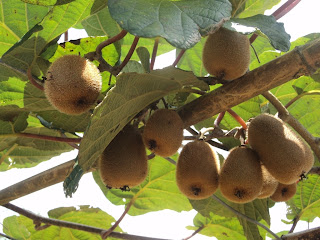Ever wondered what happens to the leftovers from fancy hotel buffets? From those famously lavish North Indian weddings? You’ll be relieved to know that at least some of them end up in the mouths of hungry children. This Friday a friend and I visited AWB Food Bank, Delhi's oldest “food rescue” organization. AWB collects leftovers from four of Delhi’s five-star hotels five days a week and distributes them to eight schools as well as a nearby leper colony. The Bank also picks up leftover rolls, butter, jam, and the like from airport flight kitchens twice a week. So if you decline that mid-flight snack, it just might not go to waste!
Garbage guru and fellow Fulbrighter Rachel Leven points out that AWB Food Bank’s work has benefits beyond feeding the hungry: In India, 70% of all municipal solid waste is organic matter, and food waste is a major problem. Food causes all sorts of problems when it rots: When added to garbage piles, food gets everything else wet and makes it impossible to recycle paper trash. It attracts flies, rats, mosquitoes. It can’t be burned efficiently. Once in the landfill, bad things leach out of it. It generates methane, a greenhouse gas about 20 times more potent than carbon dioxide.
 |
| Washing the food tins outside the office. |
When I read an article about AWB Food Bank in the Hindustan Times, I didn’t expect it to be a two-person operation housed in an unmarked, one-room office with donkeys wandering below. The office doesn’t hold much beyond some tins used to collect leftover dals and curries from the hotels. Since the hotels donate the food, the car and salaries for Sucheeta and Dev Chandra--the two employees who drive around to the hotels every morning--are the Bank's only expenses. Sucheeta has been working at the bank for 18 years, since soon after it was founded by a Delhi-ite living in New York. She estimates that the Bank feeds about 800 people a day. It used to feed more a few years ago, but funds have declined over the last few years for reasons that Sucheeta doesn't explain. Back then, it had seven employees and two vans.
 |
| My friend Zach with Dev Chandra outside the strangely fortress-like AWB Food Bank office. |
As if you needed another reason to make sure those leftovers get eaten!



